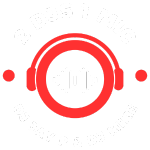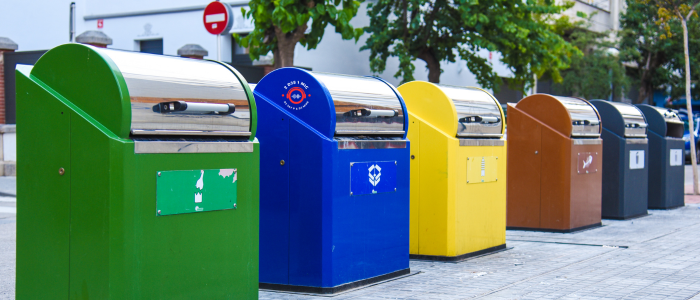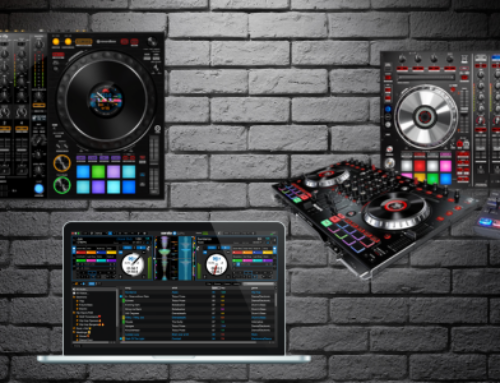Introduction:
Waste in any industry can lead to inefficiencies, increased costs, and reduced customer satisfaction. The DJ industry is no exception. Understanding and eliminating waste is crucial for optimizing operations and enhancing the overall experience for clients and audiences. In this detailed guide, DJ Mike explores the seven types of waste specific to the DJ industry, providing examples and insights on how to address them effectively.
1. Poor Sound Quality:
Description: Poor sound quality refers to imperfections in audio that cause rework, disrupt the event’s flow, or diminish the overall experience for the audience. This can result from various factors such as faulty equipment, improper setup, or inadequate acoustics.
Examples:
- Equipment Malfunctions: Using outdated or poorly maintained equipment can lead to audio dropouts, static, or feedback. For instance, a malfunctioning mixer may cause sound distortions, requiring immediate troubleshooting and replacement.
- Improper Setup: Incorrect placement of speakers or improper balancing of audio levels can create an uneven sound distribution. For example, placing speakers too close to walls can cause echoing, while an unbalanced mix can make certain frequencies overpower others.
- Environmental Factors: Poor acoustics in a venue, such as excessive echo or background noise, can negatively impact sound quality. For example, a DJ performing in a large hall with high ceilings may struggle with sound clarity unless appropriate acoustic treatments are applied.
Solutions:
- Regular maintenance and testing of equipment before events.
- Investing in high-quality sound systems and backup equipment.
- Conducting sound checks and adjusting setups to suit the venue’s acoustics.
2. Excessive Equipment:
Description: Excessive equipment refers to having too much gear, which may take up too much space, lead to obsolescence, impact safety, or create logistical issues. While it’s essential to be prepared, over-preparation can result in inefficiencies.
Examples:
- Overstocking Gear: DJs might bring multiple sets of backup equipment that are rarely used. For instance, carrying three sets of turntables for a small gig can be unnecessary and cumbersome.
- Bulky Setups: Using oversized setups that dominate the stage or venue space, making it difficult for other activities or performers to operate smoothly. For example, setting up a large DJ booth in a compact venue can obstruct pathways and limit space for dancers.
- Safety Hazards: Excessive cables and equipment can create trip hazards or block emergency exits. For example, a cluttered setup with numerous wires strewn across the floor increases the risk of accidents.
Solutions:
- Conducting a thorough assessment of the event’s requirements to determine necessary equipment.
- Utilizing versatile, multi-functional gear to reduce the number of items needed.
- Organizing and securing cables and equipment to maintain a safe environment.
3. Unnecessary Setup:
Description: Unnecessary setup involves effort that adds no value to the performance or experience from the audience’s viewpoint. This can include overcomplicated lighting rigs, elaborate stage designs, or redundant equipment configurations.
Examples:
- Complex Lighting Systems: Setting up intricate lighting systems that require extensive time and effort but add minimal impact to the performance. For instance, programming dozens of lighting cues for a small party where basic lighting would suffice.
- Elaborate Stage Designs: Creating overly elaborate stage setups that do not enhance the DJ’s performance or audience engagement. For example, constructing large, decorative backdrops that obstruct sightlines without adding to the ambiance.
- Redundant Equipment Configurations: Using multiple mixers, controllers, or effects units when a simpler setup would achieve the same result. For instance, setting up both a digital and analog mixer when one would suffice.
Solutions:
- Streamlining setups to focus on essential elements that enhance the performance.
- Simplifying stage designs to ensure functionality and accessibility.
- Evaluating the necessity of each equipment piece and eliminating redundancies.
4. Idle Time:
Description: Idle time refers to time wasted waiting for songs to load, equipment to set up, clients to provide details or other delays. This wasted time can lead to decreased productivity and prolonged event preparations.
Examples:
- Loading Times: Waiting for songs to load due to slow software or hardware. For example, relying on an outdated laptop that takes several minutes to load each track can delay transitions.
- Setup Delays: Prolonged setup times due to inefficient organization or lack of preparation. For instance, arriving at the venue without a clear setup plan can result in scrambling to connect equipment and test sound.
- Client Delays: Waiting for clients to provide event details, playlists, or special requests at the last minute. For example, receiving a playlist an hour before the event starts, leaving little time for preparation.
Solutions:
- Upgrading software and hardware to ensure quick and efficient loading times.
- Developing a streamlined setup process with clear plans and checklists.
- Communicating with clients well in advance to gather necessary information and avoid last-minute changes.
5. Unnecessary Movement:
Description: Unnecessary movement involves the movement of DJs or crew that does not add value to the performance or service. This can include frequent trips to adjust equipment, retrieve items, or communicate with others.
Examples:
- Frequent Adjustments: Constantly moving back and forth to adjust equipment settings, which could be automated or managed more efficiently. For instance, repeatedly walking to the speakers to tweak volume levels instead of using a remote control or centralized mixer.
- Retrieving Items: Making multiple trips to retrieve forgotten items or tools during setup or performance. For example, running back and forth to the van to get cables, adapters, or spare headphones.
- Communication: Moving around the venue to communicate with clients, staff, or other performers instead of using walkie-talkies or mobile devices. For instance, walking across a large venue to discuss setlist changes with the client.
Solutions:
- Automating repetitive tasks and centralizing controls to minimize movement.
- Preparing a comprehensive checklist to ensure all necessary items are readily available.
- Utilizing communication tools to facilitate efficient coordination without unnecessary movement.
6. Excessive Transportation:
Description: Excessive transportation refers to the unnecessary movement of equipment and documents around the venue or between events. This can lead to increased setup times, logistical challenges, and higher transportation costs.
Examples:
- Multiple Trips: Making multiple trips to transport equipment to and from the venue. For instance, using a small vehicle that requires several trips instead of a larger vehicle that can carry all equipment in one go.
- Inefficient Packing: Poor packing and organization of equipment, leading to the need to unpack and repack multiple times. For example, disorganized storage cases that require frequent searching and repacking during setup.
- Inter-Event Transportation: Transporting equipment unnecessarily between events or venues. For instance, taking the same set of equipment to multiple venues on the same day without proper planning and scheduling.
Solutions:
- Using appropriately sized vehicles and efficient packing methods to minimize trips.
- Organizing equipment systematically to facilitate easy access and transportation.
- Planning transportation logistics in advance to optimize routes and schedules.
7. Overperformance:
Description: Overperformance involves playing more songs or extending sets beyond what is required for the event, leading to fatigue, resource wastage, and diminished quality of performance.
Examples:
- Extended Sets: Performing for longer than agreed upon without additional compensation, leading to exhaustion and reduced performance quality. For instance, agreeing to a four-hour set but continuing to play for six hours without a break.
- Excessive Song Selection: Preparing an excessive number of tracks that are unlikely to be played, resulting in wasted preparation time. For example, curating a playlist of 500 songs for a two-hour set.
- Unnecessary Effects: Overusing effects, transitions, or remixes that do not enhance the audience’s experience. For instance, constantly using complex effects that disrupt the flow of the music instead of enhancing it.
Solutions:
- Adhering to the agreed-upon performance duration and negotiating additional compensation for extended sets.
- Curating playlists based on event requirements and audience preferences to avoid over-preparation.
- Using effects and transitions judiciously to enhance rather than overshadow the performance.
Conclusion:
By identifying and addressing these seven types of waste in the DJ industry, DJs can enhance their efficiency, reduce costs, and improve the overall experience for their clients and audiences. Regularly assessing and refining practices to eliminate waste will lead to more streamlined operations, higher-quality performances, and greater customer satisfaction.







Leave A Comment